(599 products available)









































































































































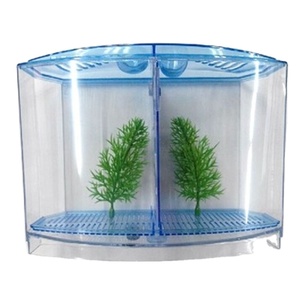
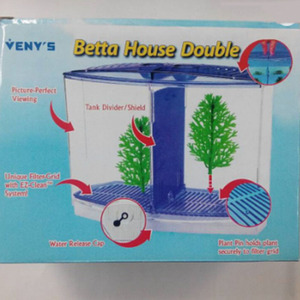
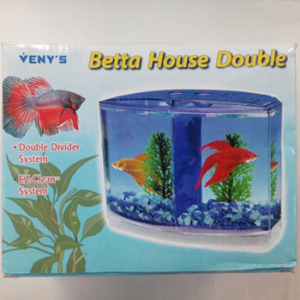
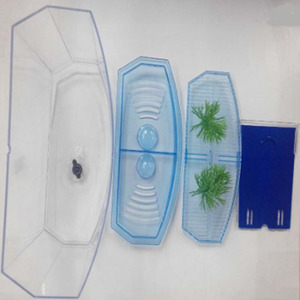
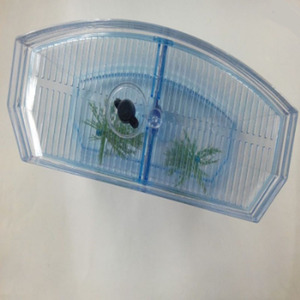
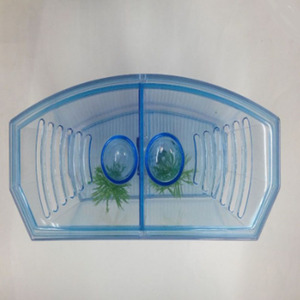

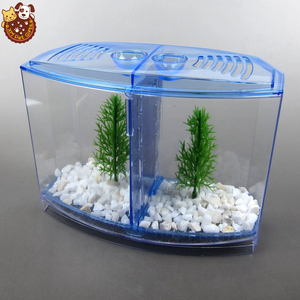

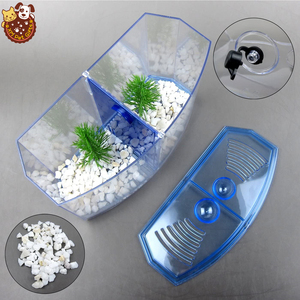

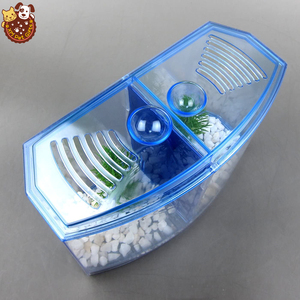
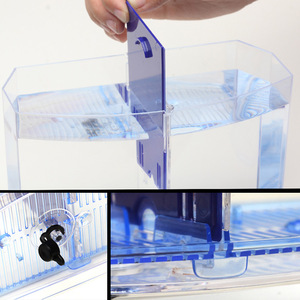

































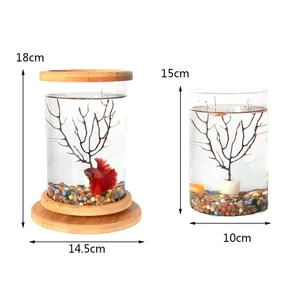
























The varieties of divided acrylic aquariums can be categorized based on their designs and the purposes they serve. Each category is made to meet different needs, making it possible to keep fish in a variety of ways within one tank.
Size and Shape
Divided acrylic aquariums come in different sizes and shapes. The most common is the rectangular shape, which provides a large front viewing panel. This allows keepers to see the fish clearly. The smaller sizes are 5-gallon tanks, while the bigger ones can hold 50 gallons or more. Some divided tanks are L-shaped or corner units. These can fit into corners or other areas that are not used well. They enable better space use without sacrificing the amount of water or the number of fish kept.
Types of Dividers
The dividers in divided acrylic aquariums can be different. Some are removable, while others are permanent. Removable dividers allow for flexibility. The aquarium owner can change the layout or remove partitions between different species. Permanent dividers keep things stable and prevent mixing species. They are good for keeping delicate fish that should not interact with each other. Furthermore, there are mesh dividers. These allow water to flow freely between sections. They are suitable for keeping species that need different water conditions.
Aesthetic Styles
Divided acrylic aquariums also differ in their aesthetic styles. Some tanks have a modern look. They may have sleek lines and minimalistic designs. Others are more decorative, with ornate frames and carved details. The choice of style can affect how the aquarium fits into the room's decor. It can also affect the mood of the space. Furthermore, the aquarium can be customized with LED lighting. This highlights the fish and plants in each section. It also makes a dramatic effect on the whole tank.
Material
Acrylic is a material that is clear and has high strength. It is lighter than glass and can be very transparent. It can also resist water pressure very well. It does not easily break or have sharp edges. Acrylic can be shaped into different forms. It is suitable for keeping animals in safe containers.
Aesthetic Considerations
When designing an aquarium, aesthetics are also important. Acrylic has a glass-like clarity that can make the aquarium look very pretty. It can also change colors or become frosted on different sides. This allows for many creative designs that can fit into any room.
Safety
Acrylic is safer than glass because it does not break easily. If it does break, the edges are not sharp. This is safer for the animals and for people nearby. The dividers can also be made to prevent fish from jumping out of their sections.
Customization Options
Acrylic aquariums can be customized in many ways. Dividers can be made to different sizes and shapes. They can also have features like filters and water flows. This makes each aquarium unique and suitable for the needs of different users.
Ease of Maintenance
Acrylic is easier to care for than other materials. It is less likely to get scratches or damages. Cleaning it does not take much effort. These features make acrylic a good choice for long-term use in fish keeping.
Durability
Acrylic is very strong. It can handle impacts and pressure well. This strength means that aquariums can last a long time. Using acrylic can also be more cost-effective over the years.
Thermal Insulation
Acrylic has better thermal insulation than glass. This means that the water temperature inside the aquarium can stay more constant. It is important for the health of the fish and other living things. Keeping the right temperature can also save energy. It reduces the need to use heaters or coolers.
Weight Considerations
Acrylic is much lighter than glass. This makes it easier to move and install the aquarium. It puts less stress on the furniture or walls where it is placed. Lower weight can also make the aquarium safer.
Divided acrylic aquariums serve various purposes in residential, educational, and commercial settings.
Residential:
Many homeowners use divided aquariums to keep different fish species in their living rooms, offices, or home aquariums. This is to prevent fish from different habitats from interacting with each other. Some homeowners also use these aquariums to keep other pets like reptiles and amphibians.
Educational:
Schools, colleges, and universities use divided acrylic aquariums for teaching purposes. Divided aquariums can help students learn more about aquatic life, animal behavior, ecology, and the importance of biodiversity. Divided aquariums are also used in research laboratories for studying different species in a controlled environment.
Commercial:
Divided aquariums are also used in restaurants, hotels, and other hospitality industries. They are often placed in lobbies, dining areas, or aquarium tanks to attract customers and create a unique experience. Some businesses use these aquariums for selling live fish or providing aquaculture services. Divided aquariums are also used in pet stores and aquarists for displaying and selling different fish species.
Public aquariums and zoos:
Divided aquariums are also used in public aquariums and zoos for conservation purposes. They can be used for breeding endangered species, educating the public about aquatic ecosystems, and promoting conservation awareness. This allows people to see how different species behave when they are separated from one another in their natural habitat.
Research facilities and laboratories:
Many research facilities and laboratories use divided aquariums for various purposes, such as studying fish behavior, testing water quality, and developing new products for aquarium maintenance. Divided aquariums enable scientists to conduct experiments on different species under controlled conditions.
Determine the Purpose:
When choosing a divided acrylic aquarium, the first step is to determine its purpose. Is it for breeding different species of fish? A divided aquarium can separate breeding pairs from others and provide a safe space for baby fish (fry) to grow without predation. Will it be used to keep different species of fish? A divided aquarium allows the keeping of separate species without cross-species interaction, which can reduce stress and territorial behavior.
Size and Shape:
Next, users must consider the size and shape of the aquarium. They should measure the space where the aquarium will be placed to ensure it fits. Also, they should decide if they want a rectangular, square, or tall aquarium. The shape of the aquarium can affect water flow and the swimming space for fish.
Number of Divisions:
Then, they should consider how many divisions they need. Some aquariums have two or more divisions. If users plan to keep different types of fish or separate fish and plants, multiple divisions may be necessary.
Materials and Durability:
Acrylic is a clear, lightweight material that is less likely to break than glass, making it a good choice for aquariums, especially in homes with children or pets. Acrylic also provides better insulation, helping maintain a stable water temperature.
Filtration and Water Flow:
The aquarium should have a good filtration system to keep the water clean. With divided aquariums, users must ensure that the filter works well in all sections. They also need to check that water flow is suitable for both sections, as some fish prefer calm waters while others like fast-moving waters.
Access and Maintenance:
Another factor to consider is how easy it is to access the aquarium for cleaning and feeding. Acrylic tanks are scratch-prone but can be cleaned with acrylic-safe products. Users should also look for access hatches or removable panels in divided aquariums to make it easier to feed and care for fish in each section.
Aesthetics:
Finally, users should consider the look of the aquarium. They can choose different designs and accessories to make it attractive. They can also add lighting to highlight the fish and plants.
Q1: Can acrylic fish tanks be repaired if they get scratched or cracked?
A1: Yes, acrylic tanks can be repaired. Minor scratches can be polished out using acrylic polish, while cracks may require special adhesives.
Q2: What is the lifespan of a divided acrylic aquarium?
A2: Divided acrylic aquariums can last many years, often 20 or more, with proper care, as they are durable and resistant to glass tank issues like cracking or leaking.
Q3: How can the joints of a divided acrylic aquarium be maintained?
A3: Regular cleaning and inspection for any signs of stress or leakage will help maintain the joints of the aquarium.
Q4: Can different types of fish be kept in a divided aquarium?
A4: Yes, different types of fish can be kept in a divided aquarium as it allows for species separation and reduces aggression.
Q5: What should be considered when selecting fish for a divided aquarium?
A5: When selecting fish for a divided aquarium, consider the size, temperament, and environmental needs of the different species to ensure they are compatible.